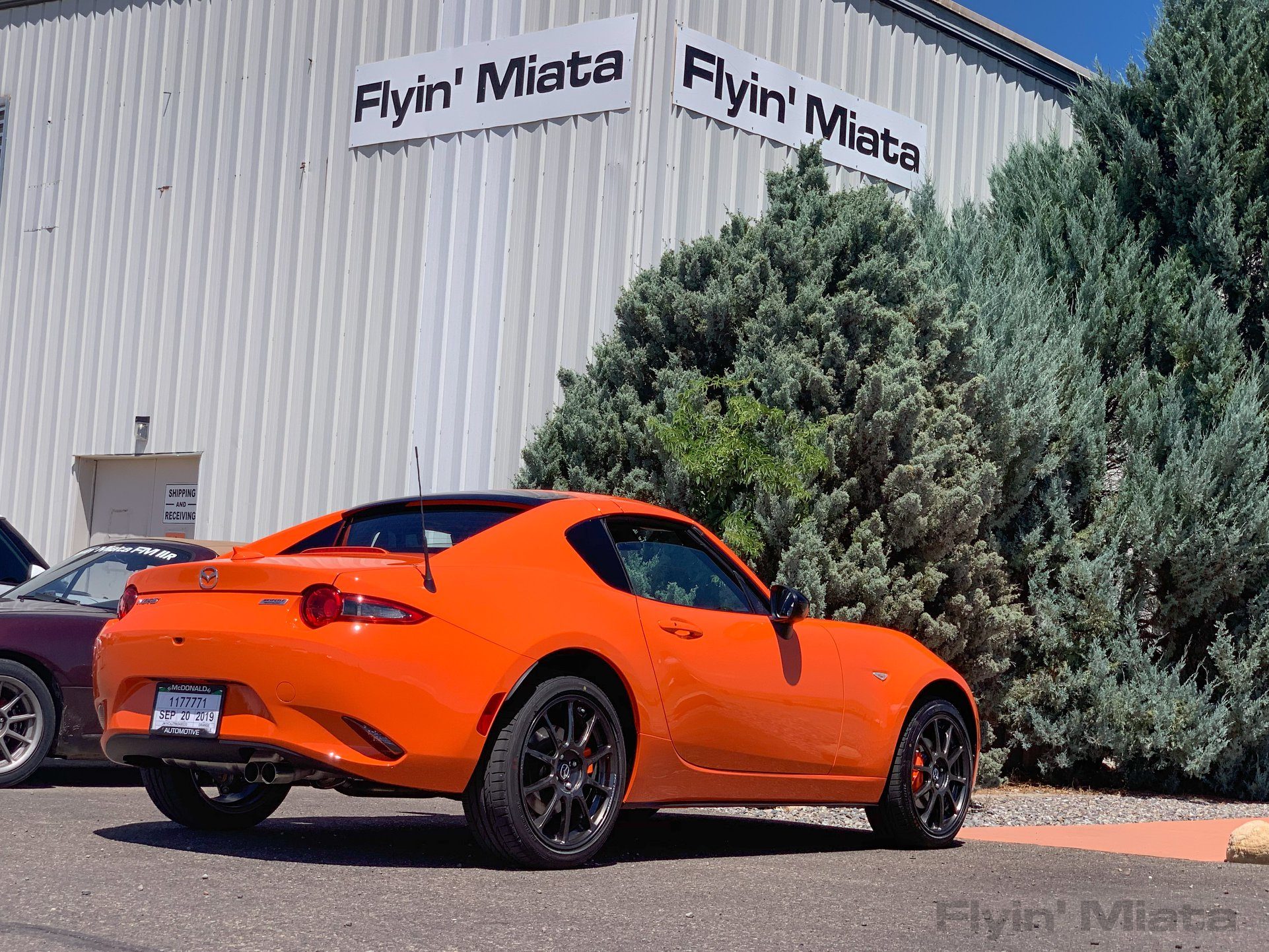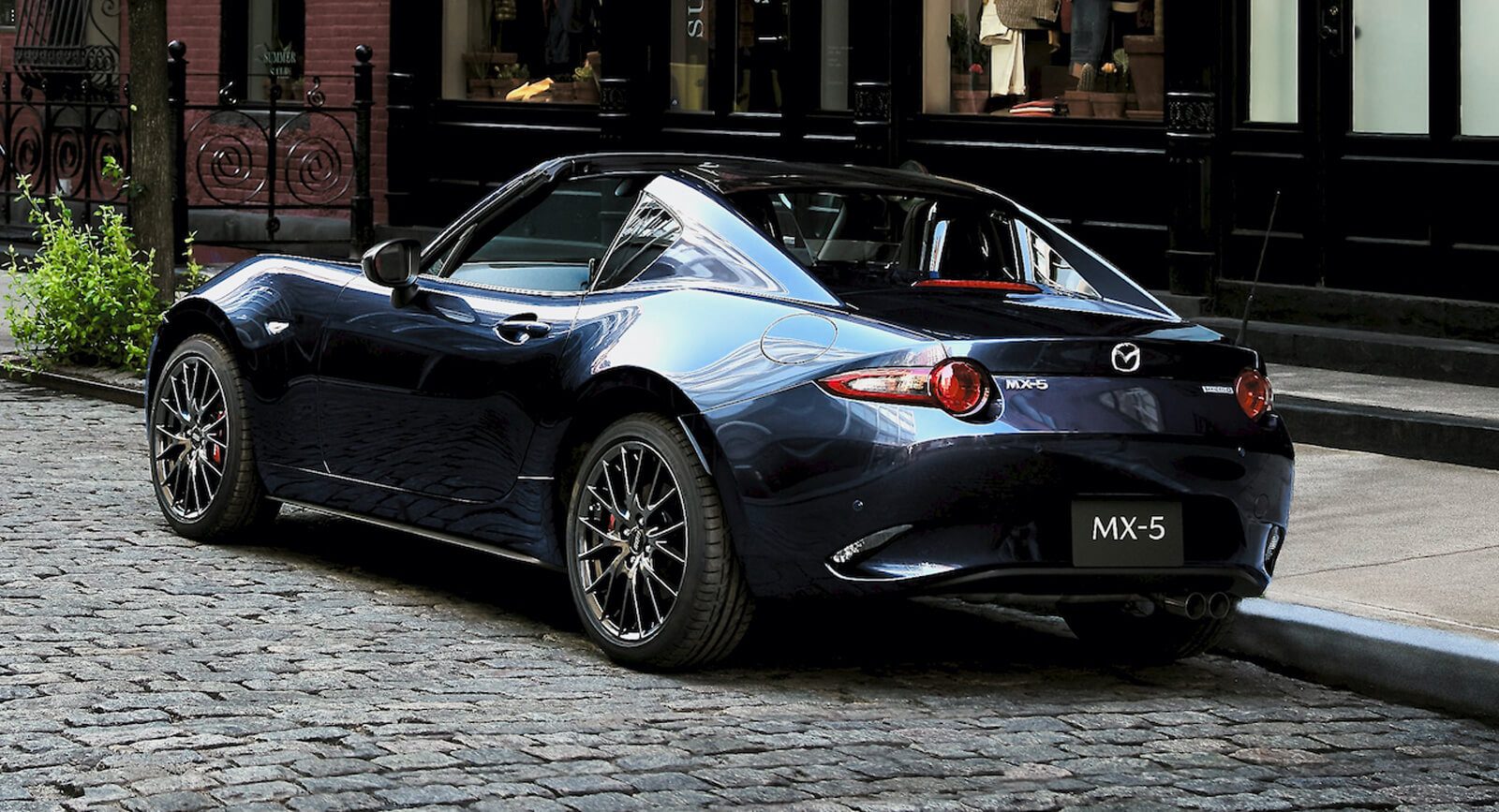CodeRedR51
Premium
- 55,581

- United States
Bill Cardell (owner of Flyin' Miata) purchased #421



Mother now has a Mk4 RF in red. Such a nice shape.
Its so weird how it is more cramped, with less storage, than my Mk1!
Kind of weird there is no Classic Red and Mariner Blue. I don't even think there's been a basic silver on the ND's palette.
Pretty much anyone who has driven the car hard. The 2-litre is particularly bad for it as it has the power to get you into trouble and wider tyres so it breaks away more suddenly when grip runs out. I used to leave the ESP on when I did track days because the roll oversteer was quite sudden and the steering didn't have enough feedback to let you know when it was coming. Driven a couple with modified suspension and they're a bit more predictable.Anyone else have a similar critique?
Trying to remember, is this why the 30th Ann. model got a stiffer suspension? Or has that been rectified by the stiffer suspension?Pretty much anyone who has driven the car hard. The 2-litre is particularly bad for it as it has the power to get you into trouble and wider tyres so it breaks away more suddenly when grip runs out. I used to leave the ESP on when I did track days because the roll oversteer was quite sudden and the steering didn't have enough feedback to let you know when it was coming. Driven a couple with modified suspension and they're a bit more predictable.
Don't get me wrong, I still like the ND, but I think Mazda's gone a little too far with deliberately letting the car roll as the body movements can be quite violent and start affecting the balance.
For reference, it's why I still prefer the NA to the ND. Those roll too, but it's more proportional to the car's responses, and on narrower tyres it doesn't let the car load up the chassis quite as much before grip runs out. And it's got more steering feedback which makes correcting the car more natural.
Oh, and in the interests of fairness, NCs weren't dissimilar, if not to quite the same level as the ND.
Don't get me wrong, I still like the ND, but I think Mazda's gone a little too far with deliberately letting the car roll as the body movements can be quite violent and start affecting the balance.
It doesn't make much difference, as far as I'm aware. Almost all the NDs I've driven have had the optional Bilstein suspension (all the top-spec cars in the UK get it as standard) but to my knowledge that's only dampers, not springs, and no anti-roll bar changes.Trying to remember, is this why the 30th Ann. model got a stiffer suspension? Or has that been rectified by the stiffer suspension?
The 86 definitely handles better out of the box (though that thing needs better tyres), but the Mazda definitely has the stronger engine. Overall I'd take the ND and then modify it to my taste, but you're right, it'll need a few more years for used NDs with the more powerful engine to start appearing in decent numbers.It's a bit of a shame, because while I haven't driven either I prefer the suspension philosophy behind the 86. Neither of them seem to be quite what they could be. The Miata could do with a suspension that corners flatter, and the 86 should have the torque dip fixed/more power. Luckily, I guess the BRZ/FRS have been out long enough that you can get a used one for a good price and get some aftermarket parts. The refreshed Miata with the updated engine is still a bit...fresh.
Driven at 8/10ths, the MX-5 isn't bad. But it is hilariously roly-poly at 10/10ths.
May's rants were amusing, but also a little wide of the mark. In general, I'd say 'Ring development has improved cars. Partly because few other places on earth are as good for durability testing (which, among other stuff, means that modern cars have much stronger brakes with better endurance than they used to), and partly because the 'Ring is so challenging that a chassis has to be a proper all-rounder to work there.In a nutshell, that's a good characterization of the difference between a good track car and a good road car. This is why James May went on so many rants about cars set up for the nurburgring.
May's rants were amusing, but also a little wide of the mark. In general, I'd say 'Ring development has improved cars. Partly because few other places on earth are as good for durability testing (which, among other stuff, means that modern cars have much stronger brakes with better endurance than they used to), and partly because the 'Ring is so challenging that a chassis has to be a proper all-rounder to work there.
Ironically, the sort of uber-stiff cars May was complaining about really don't work there - last time I spoke to a Hyundai engineer about the i30N, a car where the N literally stands for "Nurburgring", they told me that they actually run the dampers in their softest setting when testing there. And from experience, I can tell you that softest setting works really nicely on actual, real-world roads.
(The stiff suspension thing blamed on the Nurburgring is, I think, more likely down to high-speed testing, particularly with German brands that all design cars to work on the Autobahn. There you want as little suspension movement and tyre deflection as possible, so the result is a stiff setup and no sidewall...)
The MX-5 is a weird case. If Mazda had tested it seriously on a track, I don't think they'd have gone for quite as soft a setup as they did, because they'd quickly have discovered its issues when driven hard. Or maybe they did, and logically reasoned that most people won't drive like that, and those that do would modify the car anyway - which is a perfectly reasonable conclusion to come to.
The trouble is, the last modified car I drove was a better road car too, for being a little less roly-poly. I get what Mazda was going for - the roll makes you feel like you're working the car hard when you're not, so it's entertaining and old-school at low speeds - and ultimately ESP makes it a safe enough car anyway (how many owners actually switch ESP off on the road?). But a little more body control certainly wouldn't go amiss.
Edit: Or just slightly slimmer tyres. I've not driven a 1.5 in a while but I suspect that'd be friendlier at the limit on its 195s. The MX-5's problem isn't only roll, it's that it actually grips really well until the body movements take over, and then it breaks away quite suddenly.
It's not a car I'd say rides particularly well, but part of that stems from it being an open car lacking some chassis rigidity, so bumps have more profound effect than in something stiffer. But it's one of those cars that proves suspension is more complex than firm/soft absolutes, as it's a firm-riding car that also rolls quite a bit.I can accept this. But this is the detail needed to really level the body-roll criticism (in my mind at least). It's not enough to say that it rolls too much on the track, because that's not what it's primarily designed to do. If that roll means it can be cheap and still ride nicely on the road, in otherwords if it makes it a better road car (and keeps the price down, like... minus the auto-adjusting race track settings), then Mazda is on the right side of it. But if, as you say, it's not good on the road either (where we're not driving 10/10ths), then Mazda missed something.

I think I'd mentioned that of the ND in the past rather than the NC (I've not driven an NC quite fast enough to really explore its handling like that), though the NC does have the same slight excess of grip that the ND does, and at lower speeds at least it can "snap" when you're fooling about with it, like the ND does, and in a way that the NA/NB don't.I remember @homeforsummer mentioning that the NC feels twitchy on the limit
Aimed exclusively at the Australian market, the RS GT boasts upgraded Brembo brakes with enhanced cooling and high-performance pads, reducing the unsprung mass by 2 kg (4.4 lbs). It also sports re-tuned gas-pressurized dampers from Bilstein, which, according to Mazda, provide more feedback and improve the car’s grip.
The new MX-5 GT RS also features a solid alloy strut tower brace for increased rigidity and rides on bespoke 17-inch forged alloy wheels from BBS shod in 205/45 Bridgestone Potenza S001 tires. Power comes from the 135 kW (184 PS / 181 HP) and 205 Nm (151 lb-ft) of torque SkyActiv-G 2.0-liter four-cylinder that’s mated to a six-speed manual transmission.


Much as I like the MX-3's engine, I'm not sure why you'd fit a less powerful engine than the NC came with in the first place, let alone compared to a 225bhp version on ITBs...It's funny because it looks like the most "manly"(as some would feel) MX-5. I don't care. I dig each genreation. Anyway, looks like in the pic above, it could feature a V6 from the MX-3.
I'm saying the look of the car, to me, looks like it could fit a V6(a small Mazda V6). It's a tough looking car. I'm not doing any power comparisons.Much as I like the MX-3's engine, I'm not sure why you'd fit a less powerful engine than the NC came with in the first place, let alone compared to a 225bhp version on ITBs...
Well in that case a 1.8 V6 making ~140hp is hardly a tough engine for a tough-looking carI'm saying the look of the car, to me, looks like it could fit a V6(a small Mazda V6). It's a tough looking car. I'm not doing any power comparisons.
